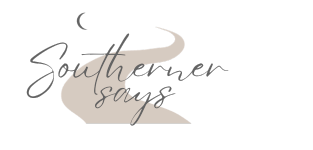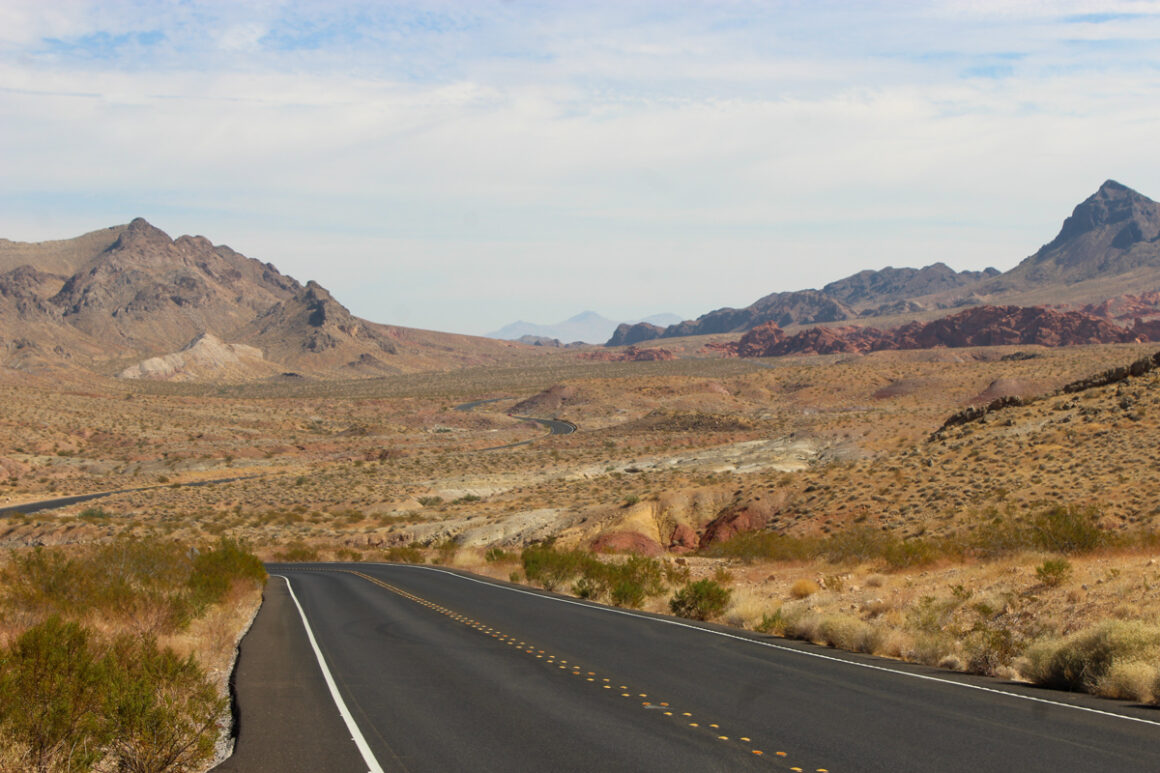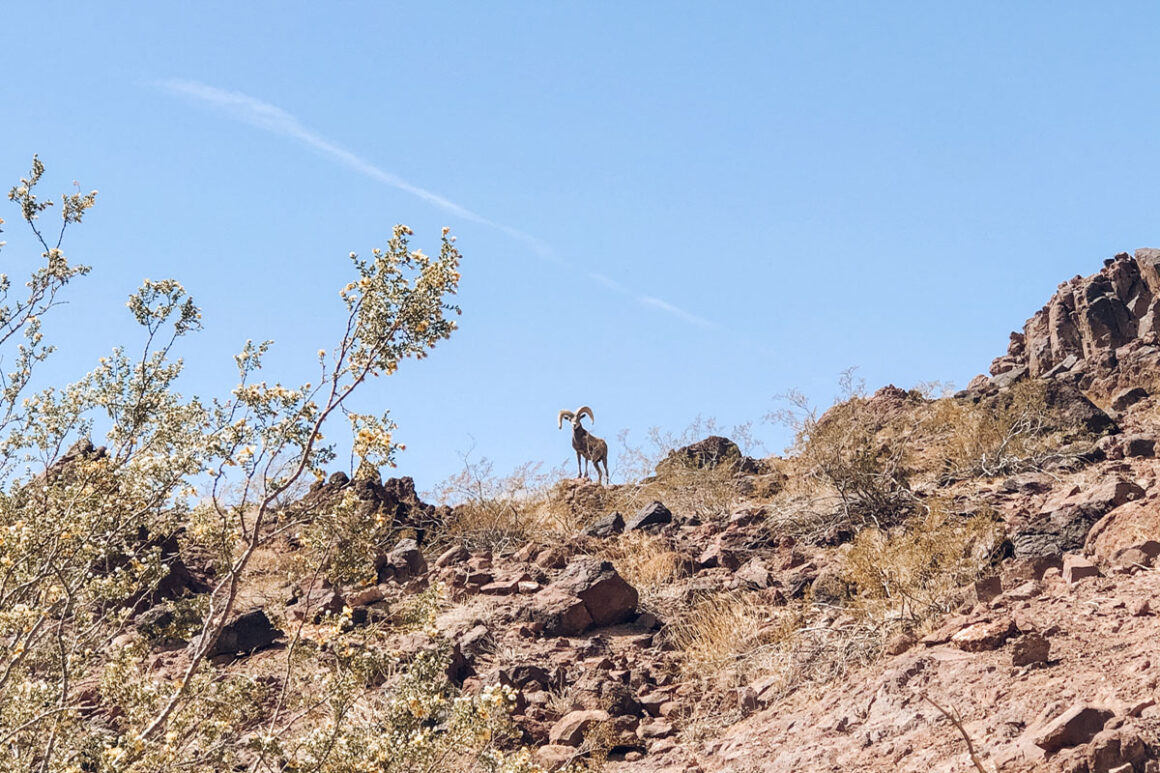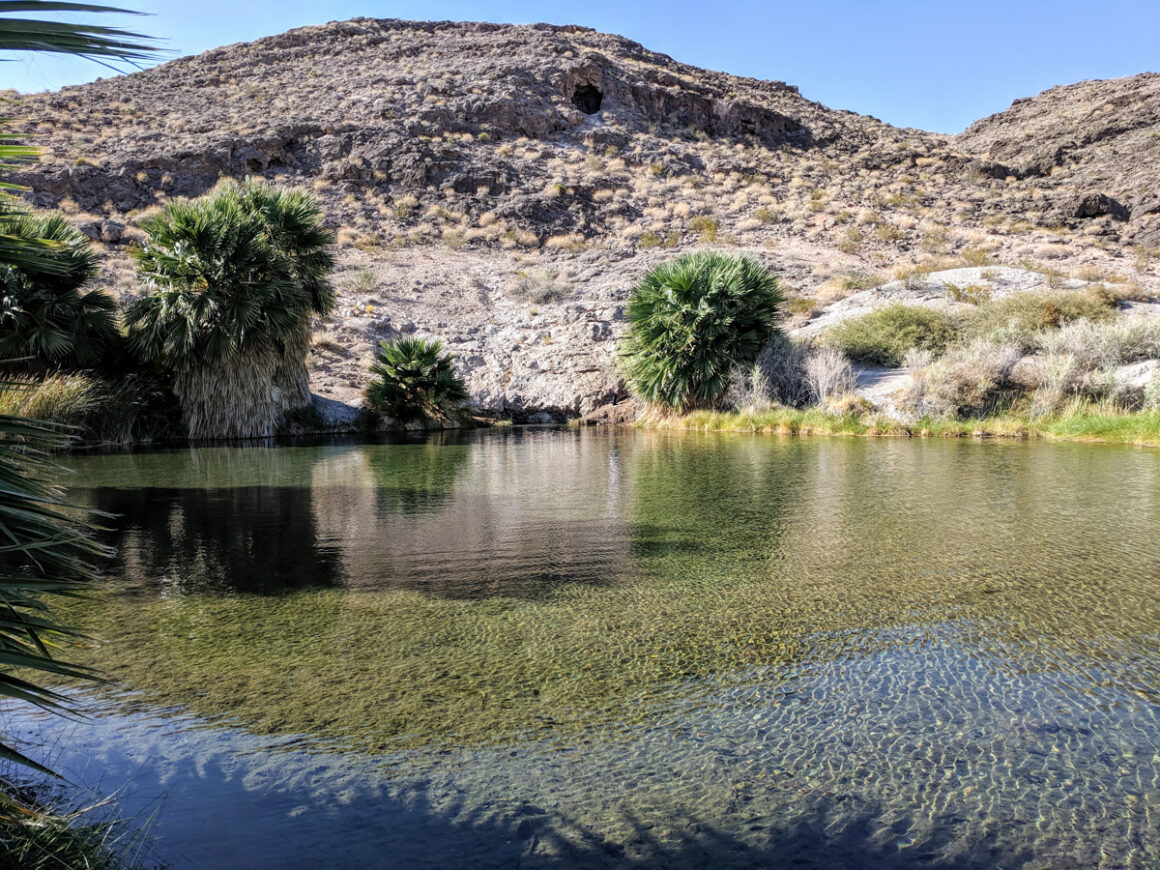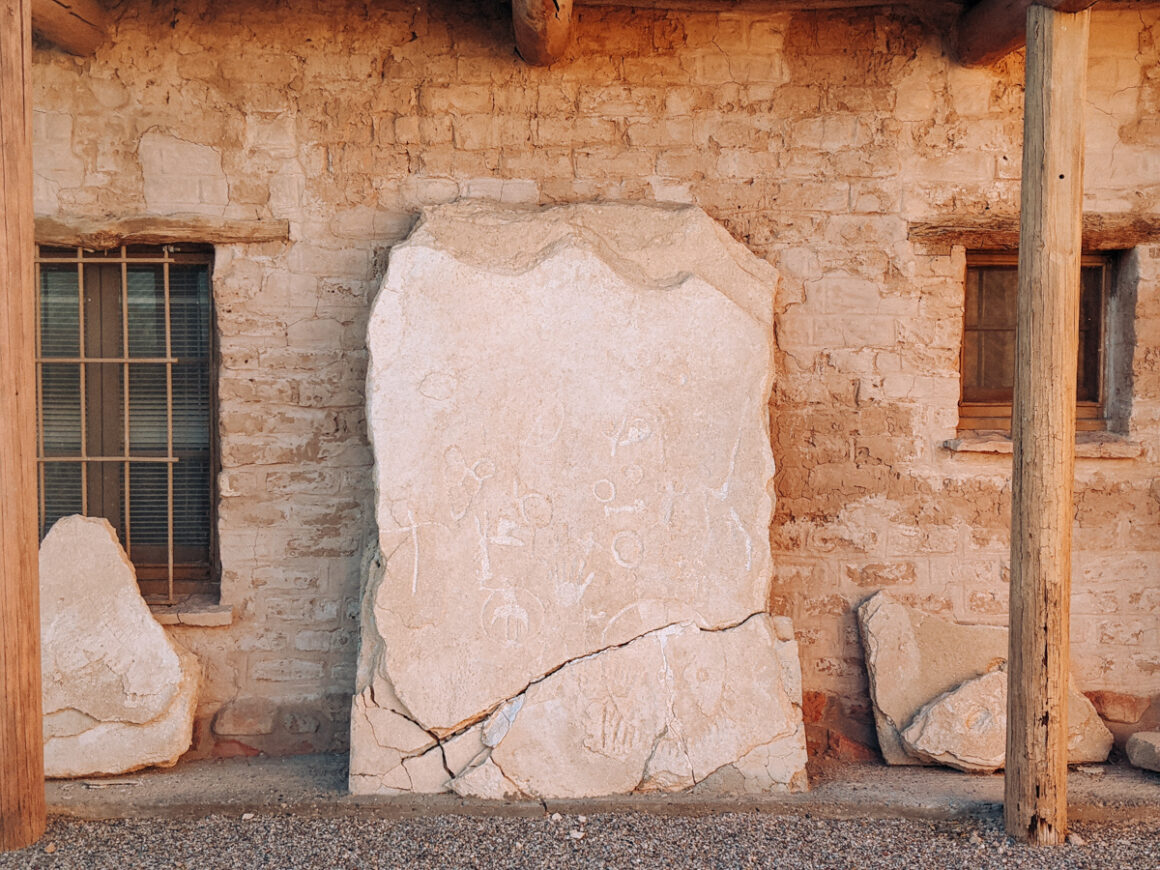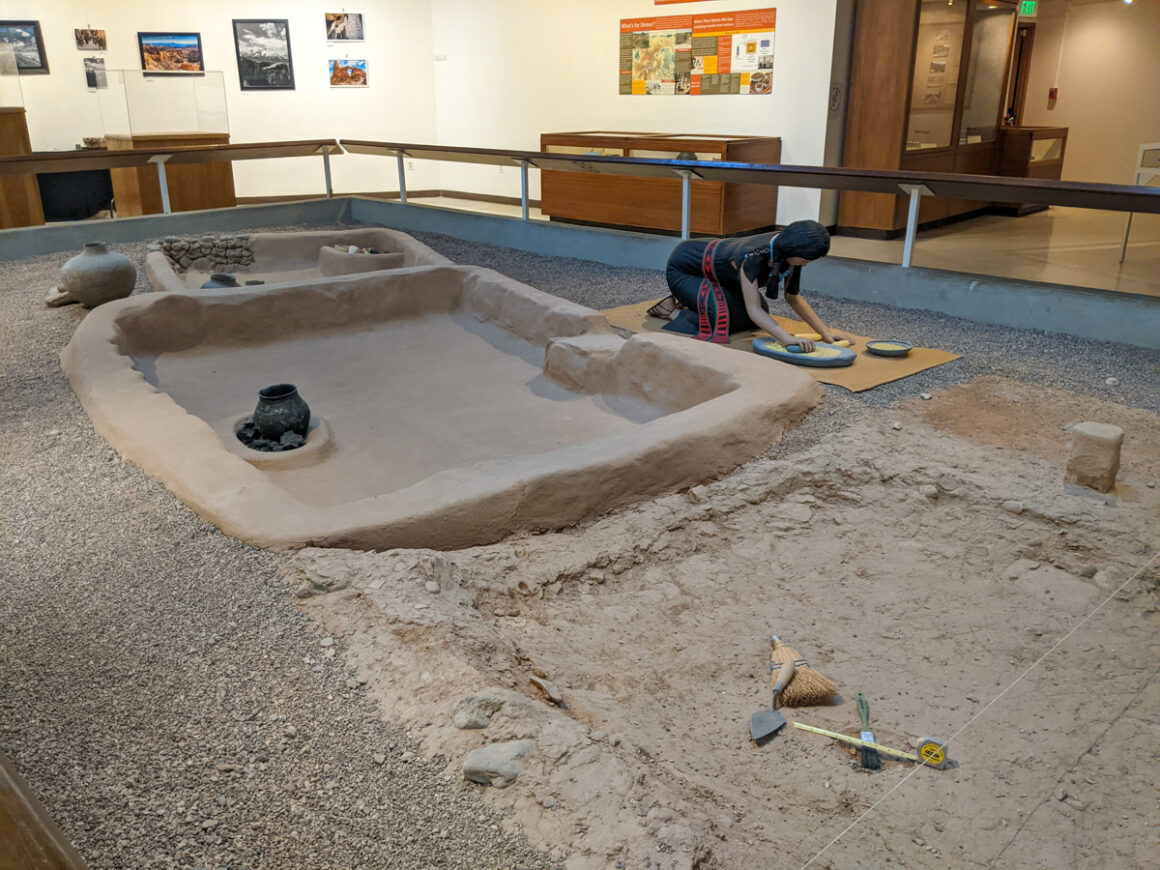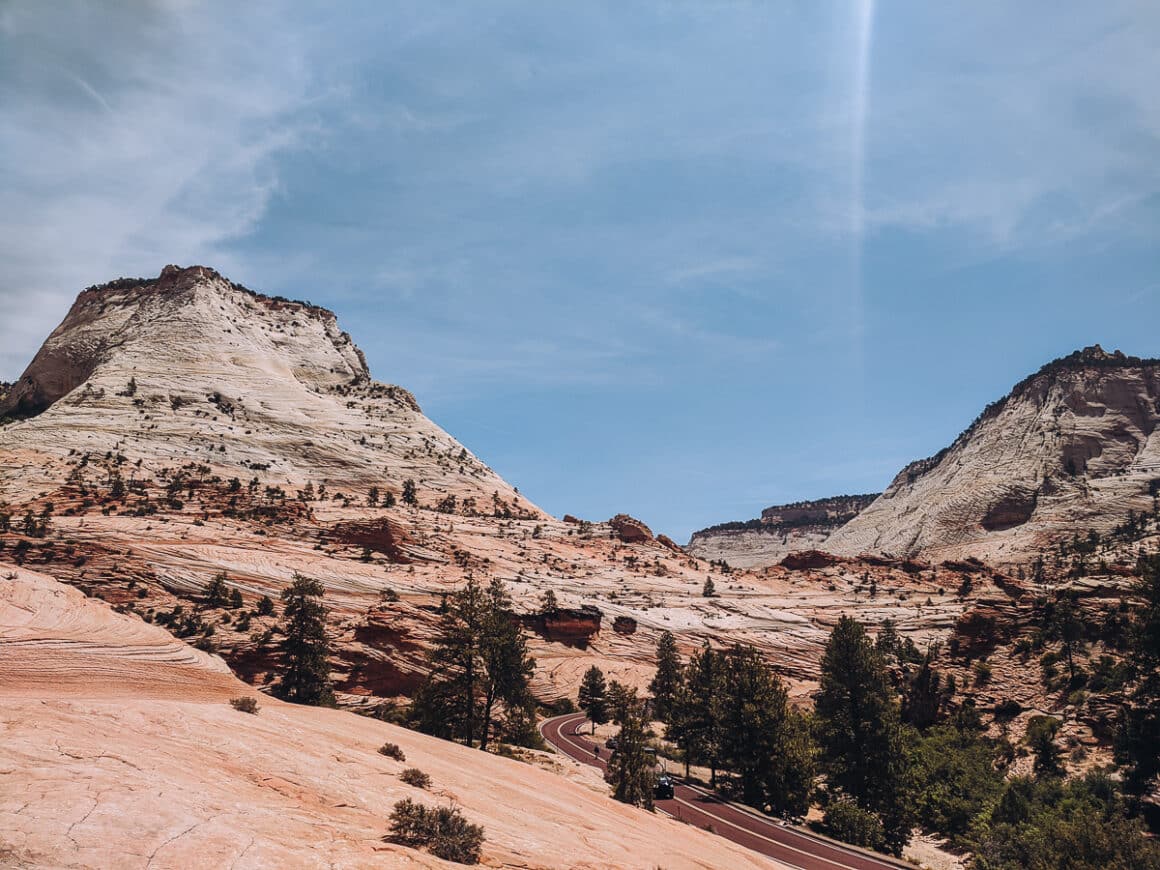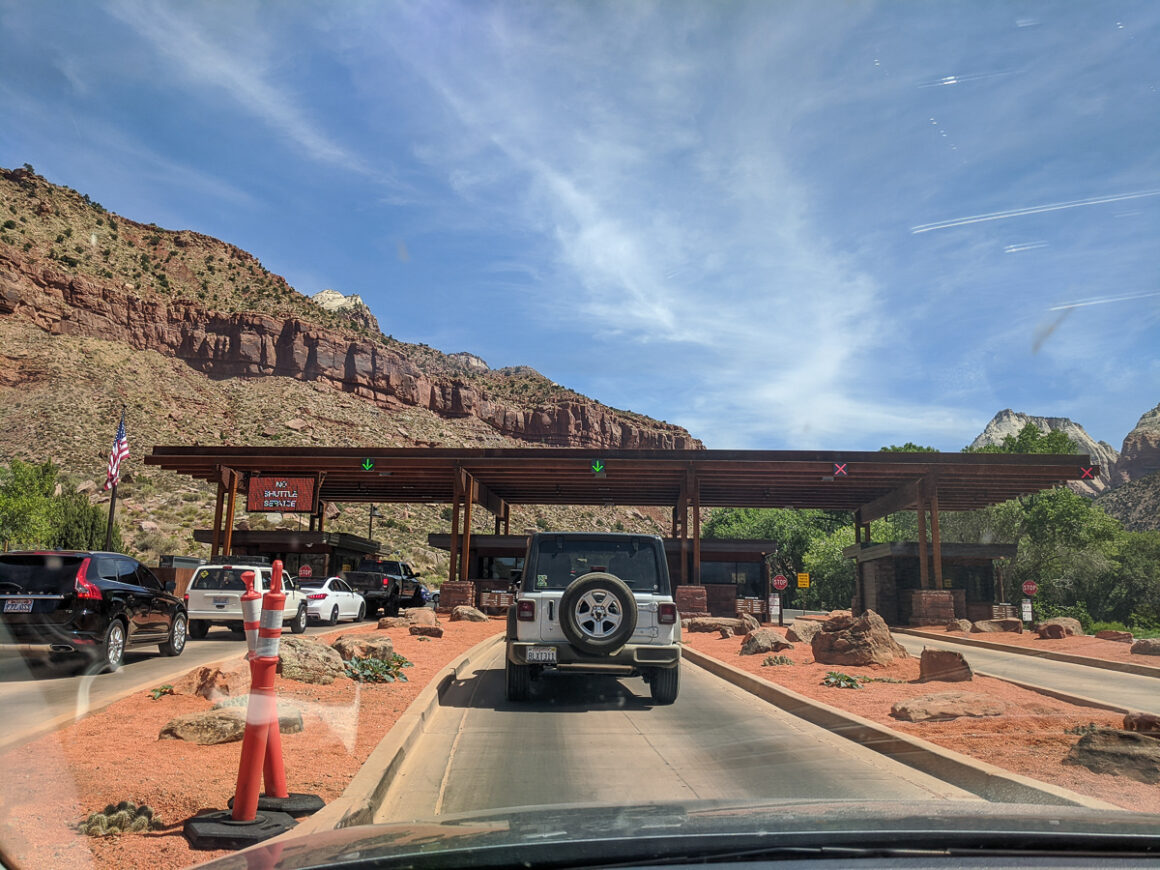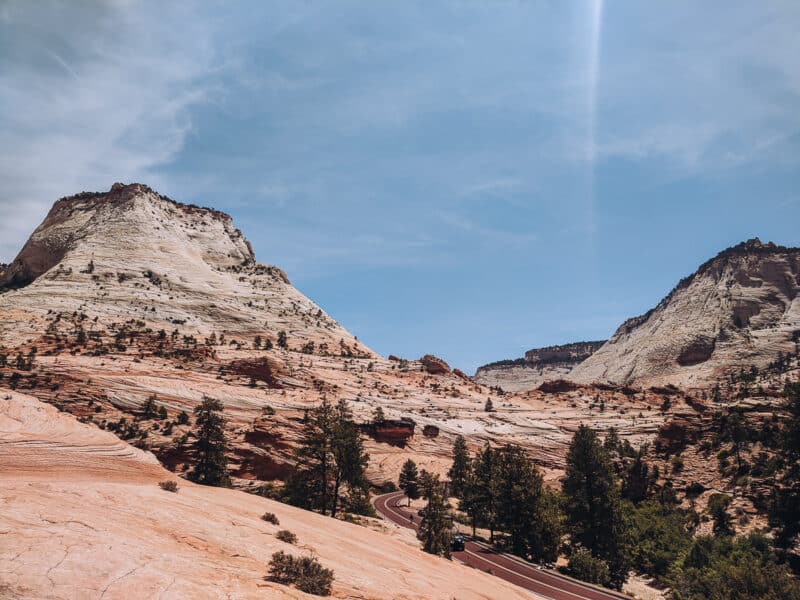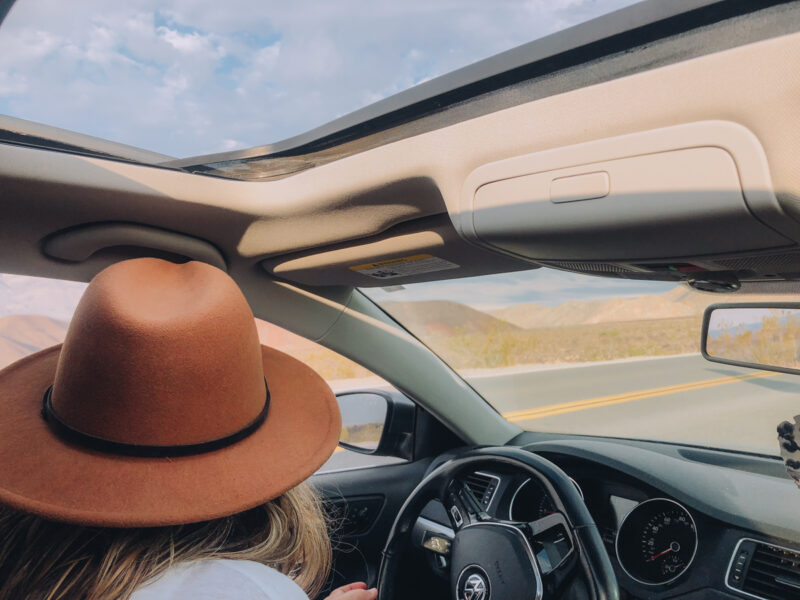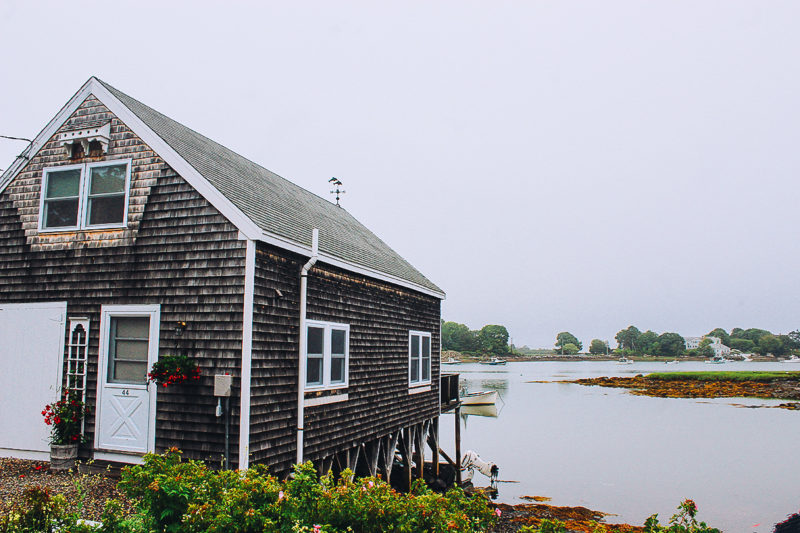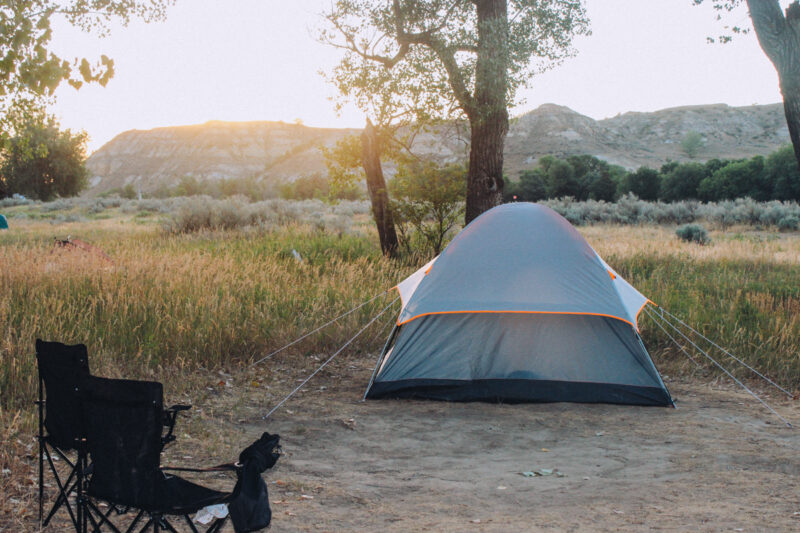An Awesome Las Vegas to Zion National Park Road Trip
Las Vegas is one of the best fly-in and drive cities for road-tripping national parks and public lands in the western United States. From its convenient location, it’s easy to explore Nevada, Arizona, California and Utah. One of the most simple road trip routes is Las Vegas to Zion National Park. Along this scenic drive, you’ll find so many things to do. Here’s how to do it.
This article contains affiliate links. That means I may earn a commission, at no cost to you, if you book or buy something from a link share. This keeps Southerner Says online and on the road. Thank you for your support.
Las Vegas to Zion National Park
Southern Nevada and Utah are two of my favorites areas for exploring and road tripping in the United States. Since my daughter lives in Nevada I’ve been able to road trip to at least seven national parks from Las Vegas. And I’ve driven this route from Las Vegas to Zion National Park with her – and solo – multiple times.
One of the things that makes this road trip appealing is how close Zion National Park is to Las Vegas. Even with limited time, you can make the most of your visit. While Death Valley National Park is technically closer to Las Vegas it requires more advance planning, making Zion a great alternative.
How Long Does it Take to Drive From Las Vegas to Zion?
Las Vegas to Zion National Park is 160 miles and takes approximately two and a half hours with no stops. If you really want to get the most of this road trip then an alternate, slower-paced route through Lake Mead National Recreation area is what I recommend. That drive takes around 3 hours and 15 minutes, without stopping and is around 180 miles.
Either of these road trip routes could be done in a day but two days would be best and three days would give you ample time to add a few other stops and destinations in southern Nevada and Utah. As you’ll see, this route is very easy to customize based on your interests, travel style and timeframe. The places in this article are just some of my personal favorites
It also might be helpful to use this Google Map I created to see the different routes I suggest and a list of the activities. Instructions are below on how to best use it.
To use this map, click on the icon on the left hand side of the title to see the map layers. Check or uncheck whichever layer you want or don’t want to see. You can also add the map to you own Google account by highlighting the faint star to the right of the title. For more info on the points of interest in layer 4, click the icon on the map or click on the name in the list. You can also get directions.
Las Vegas to Zion Road Trip Stops
Las Vegas
A Las Vegas to Zion National Park road trip is the perfect way to enjoy a bit of Vegas with the beauty of nature. It’s especially great for travelers who aren’t full-on outdoorsy but still want to see some different scenery or visit Utah.
Fly into Vegas and spend a few days around the city – taking advantage of the fun things to do in Las Vegas or add in a few day trips before heading to Zion. Red Rock Canyon Conservation Area, the Hoover Dam and Boulder City, are amazing and right outside Las Vegas. Closer to the Strip, Tule Springs National Monument and Springs Preserve should be on your Vegas, to-do list.
If Las Vegas is just a starting point for your national park road trip, then you can skip the busy hotels – with their resort fees – altogether. Harry Reid International Airport (LAS), is conveniently located south of the Strip so it’s pretty simple to get off your flight and right onto the interstate.
Or if you fly in late and decide to spend the night before driving to Zion then this Fairfield Inn, or this Home2 Suites, are both convenient to the airport and the interstate. Want a casino experience off the Strip before or after your road trip? The Aliante Casino & Hotel, north of Las Vegas with its epic pool, is the ideal place.
Need a vehicle for your Las Vegas to Zion National Park road trip? Harry Reid International Airport (LAS) is one of the most affordable airports for renting a car. RentalCars.com allows you to check dozens of rental agencies so you can compare prices and pick your favorite. Price your rental today!
Las Vegas to Overton, Nevada
63 miles via Interstate 15 or 69 miles via Lake Mead NRA
When you ask Google Maps for directions to Zion National Park from Las Vegas, the quickest and easiest route it suggests will be Interstate 15. If your objective is getting to Zion National Park as fast as possible from Las Vegas then that’s really the only way.
However, if you prefer to take a day or two and slow down the pace, consider driving Northshore Drive (Highway 167) – a 62 mile scenic route through Lake Mead National Recreation Area – connecting the park with the historic Moapa Valley and Overton. This remote route passes through some of the park’s prettiest landscapes and offers unparalleled views of Lake Mead. In my opinion, it’s one of the most scenic drives in all of Nevada.
Depending on where you’re staying – or starting your road trip from in Vegas – there are a couple of way to get to Lake Mead National Recreation area from Las Vegas.
From north Las Vegas, or the Strip, driving Las Vegas Boulevard directly into the park is probably best. Las Vegas Boulevard ends directly on Northshore Road. Take a left to continue into the park (see Google Map layer 2) and along the shore of Lake Mead. Note: this route does not have a ranger entrance station.
If you are staying near the airport, or in south Las Vegas, head towards Henderson – most likely on the interstate – to West Lake Mead Parkway. This route takes you through Henderson to Lake Las Vegas. (see Google Map layer 3) Just a couple of miles beyond Lake Las Vegas is a Lake Mead entrance station into the park.
Lake Mead National Recreation Area is a fee based park so you will need to pay the $25 fee, have an annual pass or own an America the Beautiful Park Pass. If you don’t have an America the Beautiful Park pass, here’s your chance to go ahead and get one. Especially since Zion National Park is also a fee based park. After entering the park, take a left to access Northshore Drive.
As you drive Northshore, you’ll pass areas like Redstone, with rocks so red they don’t even look real, Echo Bay, or E Bay – that sounds familiar – and Rogers Springs, a hot springs oasis with palm trees. All of these are must-stop spots in the park. Lake Mead NRA is home to wild horses, burros and big horn sheep so be on the lookout for those.
Exiting Lake Mead National Recreation Area on Northshore Road, the east entrance of Valley of Fire State Park is just a mile or so down the road. One of Las Vegas’ best known secrets, Valley of Fire is Nevada’s first state park and is full of out of this world geological features among stunning red Aztec sandstone and textured pink limestone.
Valley of Fire’s location is perfectly situated next to Lake Mead, making it convenient time-wise to drive Northshore through Lake Mead in the early morning, spend some time in Valley of Fire and then be on your way to Zion National Park later in the day. Even if you only drive through Valley of Fire with no stops it’s worth the $15 non-resident fee ($10 for Nevada residents).
From Valley of Fire State Park, continue on to Overton, Nevada for the next stop from Las Vegas to Zion at the Lost City Museum. Not only is the building itself a historic treasure, built in 1935 by the CCC (Civilian Conservation Corps) – something that park lovers will appreciate – but the museum also houses an actual archaeological site excavated in the 30’s, reconstructed pueblos outside and huge salvaged petroglyph panels.
A couple of things to note: if you take I-15 to Zion from Las Vegas you’ll enter Valley of Fire State Park via the park’s west entrance on the Valley of Fire Highway – which is exit 75 on I-15. This highway passes through the park running east to west between I-15 and Highway 169.
Then once you visit the park you would exit the Valley of Fire through the east entrance, turn left on Highway 169 – toward Overton and Moapa Valley – to visit the Lost City Museum before returning to I-15 via Highway 169 (see Google Map layer 1). This is the popular way to do it since most people would drive the interstate to Valley of Fire and/or Zion National Park.
However, if you enter Valley of Fire State Park from Lake Mead National Recreation Area, you will be entering at the east entrance. After visiting the park you will need to backtrack a few miles and exit the east entrance again onto Highway 169 to get to Overton for visiting the Lost City Museum before continuing on to Zion on Interstate 15.
Overton, Nevada to Mesquite, Nevada
45 miles
Once you get back to I-15 from Overton, it’s just a short thirty miles to Mesquite, Nevada – a small interstate adjacent town that’s an excellent place to overnight between Las Vegas and Zion National Park. The Eureka Casino Resort or the Holiday Inn Express, are both convenient places to stay.
Staying in Mesquite also gives you the opportunity to check out some local art and attractions. The Virgin Valley Heritage Museum, featuring information about the early pioneer settlers in the area and the Donkey History Museum, managed by a local donkey rescue, are both good places to learn more about the area.
You could also add a visit to Gold Butte National Monument (BLM) to extend your trip. I would only do this if you had a couple of full days since Gold Butte is mostly unpaved and gravel roads. It’s slow going and only high-clearance vehicles and 4×4’s are recommended for this remote park unit.
Mesquite, Nevada to the Virgin River Gorge, Arizona
21 miles
Leaving Mesquite, you’ll pass through the remote northwestern corner of Arizona, also known as the Arizona Strip – named for its isolation from the rest of the state due to the Grand Canyon. Once home to the Kaibab and other Native American tribes, this section of the state was settled by Mormon pioneers in the 19th century.
It’s an area of full of history, cultural significance and natural wonders. One of those wonders is the Virgin River, – the same river that flows through Zion National Park. Together with the Muddy River, the Virgin River is one of the most significant water sources for Arizona, Utah and Nevada and empties into the Colorado River just north of Lake Mead.
The drive from Las Vegas to Zion National Park on Interstate 15 takes you alongside the river and through the breathtaking Virgin River Gorge. Carved over 500 million years ago, the gorge is one of the most spectacular and exciting stretches of interstate in the entire United States. And one of the most expensive. The last bridge repair made in the mid 2000’s cost more than the entire project in the 1970’s.
You’ll want to stop and see more of the river but unfortunately due to the interstate’s narrow shoulders in this section of the gorge, there aren’t places to pull over. However, the BLM (Bureau of Land Management) maintains the Virgin River Canyon Recreation Area at Exit 18 – a great spot to take a break and stretch your legs with a short walk.
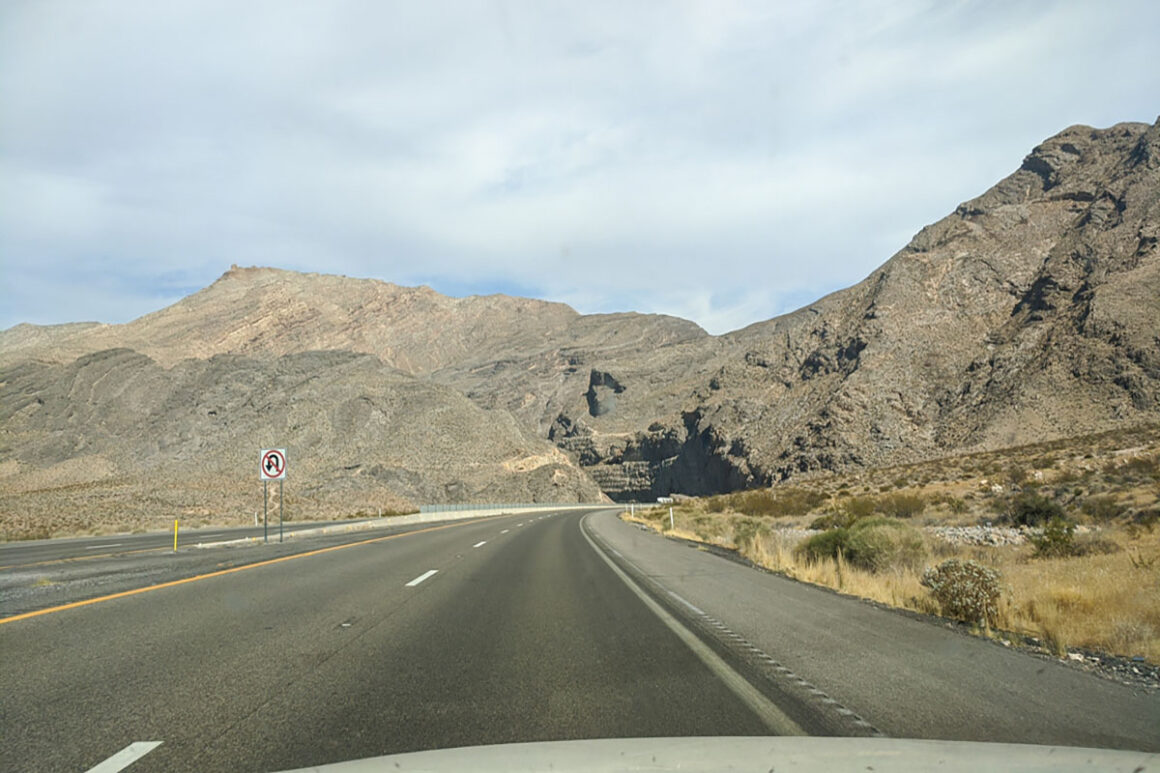
Virgin River Gorge to St. George, Utah
20 miles
Besides the “Welcome to Utah” sign, the remaining interstate stretch into Utah is pretty insignificant. St. George, the first large city you’ll come to north of the state line, offers plenty of activities for an even longer Las Vegas to Zion National Park road trip. White Domes Nature Preserve, Tonaquint Nature Center and St. George Dinosaur Discovery Site are just a few worth mentioning.
Really, this entire area of southern Utah is full of enough things to keep you busy for weeks! And state parks like Sand Hollow State Park, Quail Creek State Park and Snow Canyon State Park are close by and could easily be added to a Las Vegas to Zion itinerary. I spent a day at Snow Canyon on my way to Zion one time and loved it.
Red Cliffs National Conservation Area is another gorgeous area, just north of St. George, offering some interesting hikes and a cute, small first-come first-served campground. For those that like to reserve a campsite, there’s a KOA nearby too.
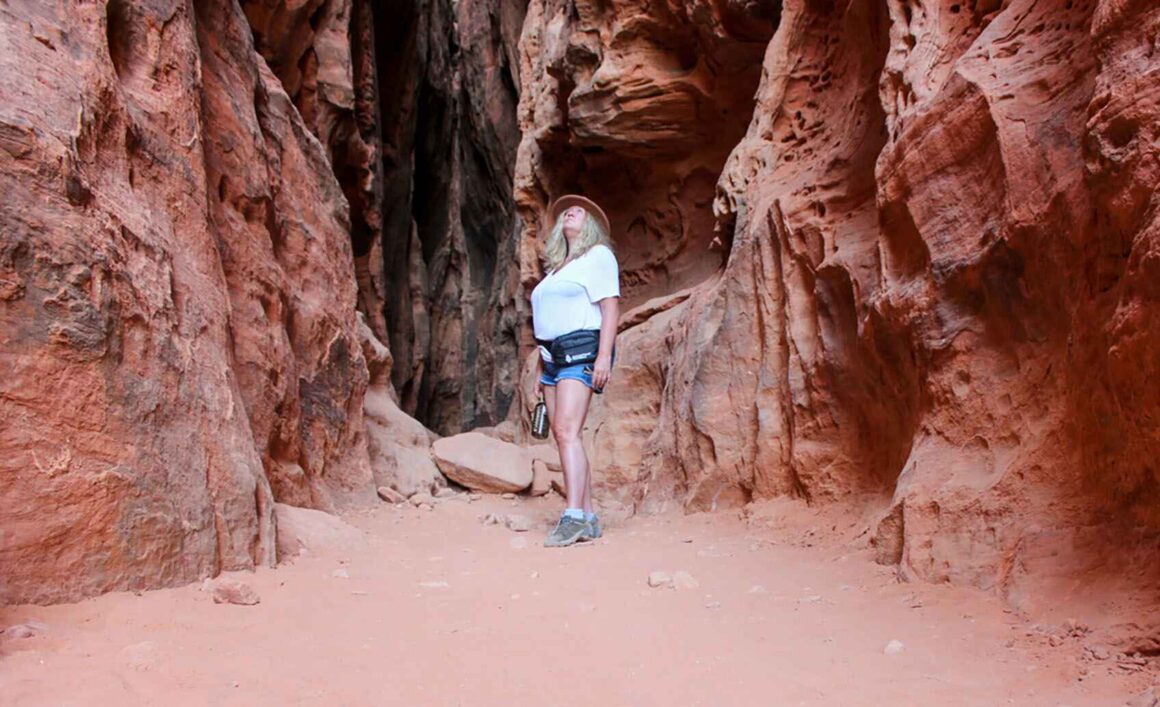
St. George, Utah to Hurricane, Utah
19 miles
Just a few miles north of St. George, you’ll trade the interstate for Highway 9. Exit 16 has the signage for Zion National Park but I prefer to use exit 13. Mainly because of the Maverik Convenience Store – a Wyoming-based brand store that’s popped up across western states – and less traffic compared to the other exit. I began stopping here a few years ago for snacks, ice and fuel.
Now I love their stores and look for them whenever I’m traveling “out west”. You can always count on super clean restrooms, hot food, like breakfast sandwiches and quesadillas, plus some really cool murals of the surrounding areas. As St. George grows and spreads out, this exit has grown too but I still gas up here before I head into Zion.
Once you’re on Highway 9, it’s only 19 miles to Hurricane (Hur-e-kun not Hur-e-cane). For groceries, or other supplies, the Walmart Super Center in Hurricane is the last chance for a big haul. Personally, I try not to stop here because it’s always crowded but if you need any supplies or food items then this is the place.
On this stretch of highway you’ll also see several chain hotels. Comfort Inn & Suites and Sleep Inn & Suites are both highly rated on Google and Expedia. I have not ever stayed at either, but if I wanted to explore more of the area, then either of these would be good choices. And they are newer than some of the other hotels in downtown Hurricane.
Hurricane, Utah to Zion National Park
24 miles
From Hurricane you’re almost to Zion. All that’s left is the drive through a few small communities before arriving at the park. A couple of notable stops – at least for me – River Rock Roasting Company – in the small town of La Verkin – with tasty breakfast sandwiches and delicious burgers PLUS some killer view from the back patio. (They also have a drive-thru in Hurricane but its not the same vibe.)
Also, La Verkin is the last place to buy groceries at a decent grocery store. Davis Food & Drugs is the only one in town, along with a Family Dollar, that offers a few basic food items. Springdale – right next to Zion has a few smaller markets and deli’s but nothing the size of these two stores.
Just north of La Verkin, on Highway 9, you’ll begin to see more accommodations and campgrounds. Zion River Resort is a huge RV and tent campground with nice, clean facilites (I have stayed here) and Zion Wildflower Resort, (toured the resort) is a collection of small cottages and covered wagons. Also nearby is the ever popular Under Canvas Zion property (on my wishlist).
Springdale and Zion National Park
Next is Springdale and you’re practically in the park. Remember Zion is a fee-based park so you will be required to pay a $35 per-car fee ($30 for a motocycle) or use an America the Beautiful Park Pass to drive into, or through, the park. Even if you don’t have plans to ride the shuttle into Zion Canyon, you’ll need to pay.
A few years ago, Zion tested a reservation system for the shuttle into Zion Canyon but that’s no longer required. Now the only activities requiring a reservation, or a permit, in Zion National Park are hiking Angels Landing and Virgin River Narrows.
In the park, don’t miss the informative visitor center, hiking and walking along the Virgin River and honestly just take some time to enjoy the views, the colors and beauty of Zion. Being in the canyon and surrounded by the towering walls is a really unique park experience.
It’s worth mentioning that Zion National Park can get really crowded during the busy season and parking can be difficult. If you are staying in Springdale, take advantage of the free Springdale shuttle into the park that the city offers to cut down on parking issues. (Not to be confused with the shuttle inside the park that takes you into Zion Canyon).
Whatever your situation you’ll definitely want to get to the park as early as you can when visiting in busy months. That, and implementing a few other tips for avoiding the crowds in Zion National Park, will help you get the most out of your Zion visit.
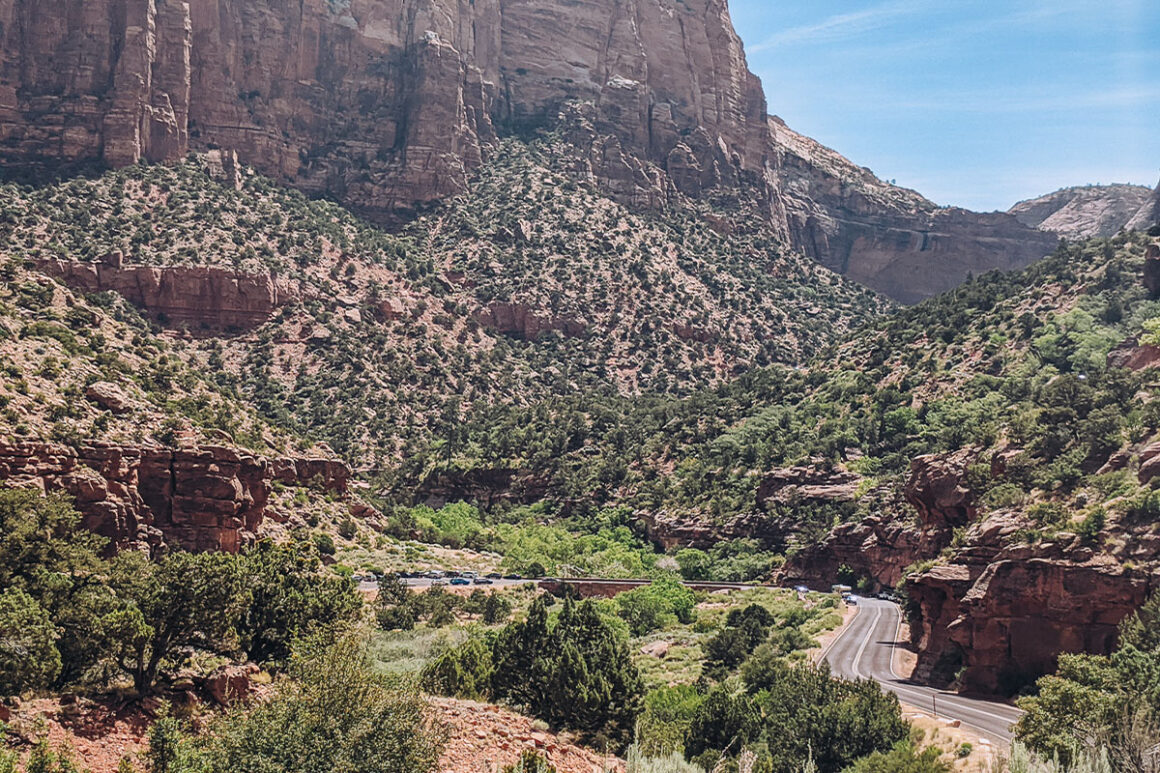
Zion National Park Tips
Here’s a few Zion tips you might find useful:
- Remember if you plan on hiking Angels Landing while in Zion, permits are required. You can find out more info on the Zion’s website here.
- Pick up a National Park Service map and newspaper at the entrance station to help plan your visit. Also, if you plan on spending some time in the area you can never go wrong with a more detailed map. This National Geographic Zion one is really useful.
- I also suggest buying a Zion guidebook. James Kaiser is one of my favorite national park writers and he has written a really informative guidebook about Zion. Moon Guides, another fav, offers a Zion and Bryce Canyon guidebook.
- Cellular service is spotty in the canyons of Zion National Park and surrounding areas but ultimately it really depends on what carrier you use. I have Verizon and never have good service in Southern Utah but my daughter uses AT&T and she generally has better service than me.
Need a place to stay in Zion National Park? The park has its own lodge and two campgrounds plus there’s plenty of BLM land around Zion for dispersed camping. Not a camper but enjoy uniques stays? Then consider a cabin or covered wagon at Zion Wildflower Resort, located in Virgin, just a few miles from the park.
Best Time to Road Trip From Las Vegas to Zion National Park
Zion National Park is open year round and can be visited in any month, weather permitting. Mild Las Vegas temperatures and good roads make it easy getting to the park even in winter. But since Zion is at a higher elevation than Las Vegas, you can encounter snowy, icy conditions closer to the park.
In summer, as well, it’s critical to keep an eye on the weather forecast, especially during monsoon (summer). The canyons are prone to landslides and flooding when it rains. At times, the park service closes trails due to potentially dangerous conditions and rock slides. Be smart. Always check the forecast and the park website before you go.
Spring
Spring in Zion National Park is a beautiful time of year to visit. If they has snow, it’s melted and the temperatures are mild. The park is bursting with new growth and you’ll have the opportunity to see more water in the river and waterfalls. Spring is a busy time at Zion but not as busy as summer. Average daytime in the 70’s.
Summer
Summer is the busiest time at Zion National Park. You’ll need to be strategic about when you go. There are a few things you can do to avoid the crowds in the park. Summer is also monsoon so the probability of rain and even flooding increases in June, July and into August. Definitely pack a rain coat or lightweight jacket. Average temperatures in the 80’s.
Fall
Fall is also a good time to visit Zion. Some of the summer crowds have thinned out and it’s not as hot. Dress in layers and remember that the Zion shuttle into the canyon runs until December. Visit the park website for the exact dates that may vary from year to year. I visited in late November one year and it was cool but perfect.
Winter
With an elevation of 4,000 feet, winter in Zion is cold and there’s always a chance of snow and ice. Some of the park roads and trails may even close. January will be the coldest month with highs in the 40’s based on recent years data. The bonus of visiting in winter is that it’s not shuttle season so you can drive your own car into the canyon.
Other Road Trip Ideas Around Las Vegas to Zion National Park
Kolob Canyons is another section of Zion National Park that could be included in a Zion road trip. Instead of exiting the interstate at Hurricane, continue north for approximately 25 miles to exit 40. This section of Zion has the same red Navajo sandstone canyons as the main park with way less crowds. (Map Layer 5)
If you are trying to group national parks together and visit as many as you can at the same time, then Bryce Canyon National Park, just 84 miles, is another a good addition to a Las Vegas to Zion road trip since it’s so close. Plus, the park itself is super easy to visit. Then you can make a big loop, returning to I-15 through the Dixie National Forest. (Map Layer 8)
Another route suggestion after visiting Zion, is to head east to Mount Carmel Junction and then south on Highway 89 to Kanab. There are tons of things to do in, and around, Kanab. When you’re ready to return to Las Vegas, use Highway 389 through Colorado City and Apple Valley to Hurricane and the interstate. I have more info coming soon on this road trip route. (Map Layer 6)
And if you want to see Zion National Park and the Grand Canyon at the same time, drive south from Zion and and make a big loop, visiting the South Rim and Sedona before returning to Las Vegas or even Phoenix. Or do that route in reverse, starting with the Grand Canyon, around the east side of the park and north to Zion through Kanab. (Map Layer 7)
Las Vegas to Zion National Park Round-Up
Visiting Zion National Park from Las Vegas is a perfect road trip itinerary. It’s ideal for anyone – families with small children will appreciate it because of its short distance. And solo road trippers will enjoy the simplicity, and safety, of driving to Zion.
It’s also easy to make a loop and return to Las Vegas to fly home. Or if you have time, continue on a southern Utah national park road trip. You could also end your trip in Salt Lake City and fly from there. Honestly, between Nevada and Utah, the possibilities are virtually endless.
As you adventure and explore, remember to use Leave No Trace principles when visiting national parks, sacred areas and public lands. Always leave things better than you found them. If you need help planning a Zion National Park trip or any trip, I’m just a click away. Use the form below to contact me.
See you on the road!

Author: Lori Blalock
A girl raised in the South, Lori is the founder of Southerner Says and a travel advisor with over 100,000 miles of solo road trip experience. Passionate about public lands, sunsets, and good barbecue, she writes about and helps others plan memorable getaways across the U.S., Mexico and the Caribbean. When she’s not on the road, she’s living life back home in Georgia
